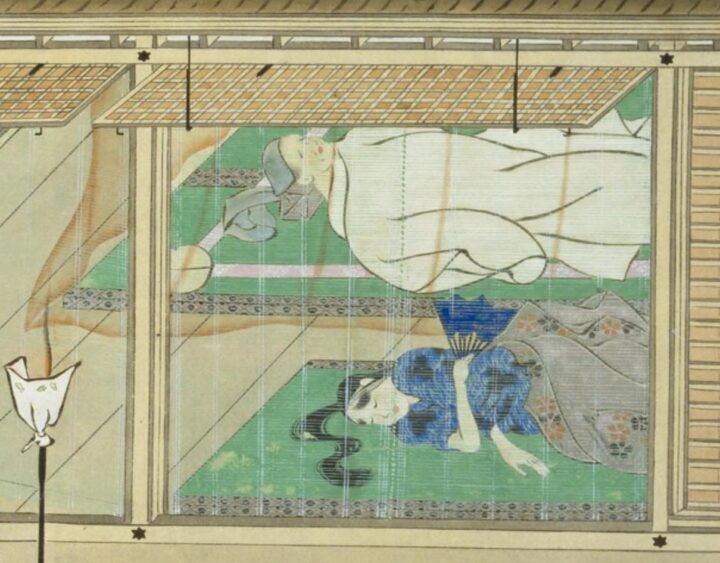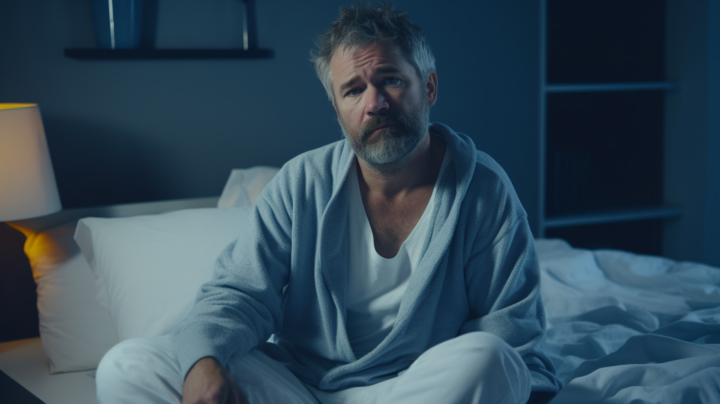
Achieving high-quality REM sleep is essential for overall health and well-being. REM (Rapid Eye Movement) sleep plays a crucial role in memory consolidation, emotional regulation, and physical restoration. Unfortunately, modern lifestyles often disrupt this vital sleep phase. In this article, we’ll explore actionable strategies to improve REM sleep and ensure you wake up feeling refreshed and rejuvenated.
Understanding REM Sleep
What Is REM Sleep?
REM sleep is a unique stage of the sleep cycle characterized by rapid eye movements, heightened brain activity, and vivid dreams. It typically occurs 90 minutes after falling asleep and recurs multiple times throughout the night. During this stage, your brain processes emotions, consolidates memories, and boosts creativity.
The Stages of the Sleep Cycle and Their Importance
The sleep cycle has five distinct stages divided into non-REM and REM sleep. Non-REM stages are responsible for physical repair and recovery, while REM sleep focuses on cognitive functions. A balanced sleep cycle is critical for overall health.
Why REM Sleep Matters for Health and Well-Being
REM sleep contributes to mental sharpness, emotional stability, and problem-solving abilities. Insufficient REM sleep is linked to mood disorders, impaired memory, and even a weakened immune system.
The Science Behind REM Sleep
How REM Sleep Affects Brain Function
REM sleep plays a significant role in brain development and repair. During this phase, neurons form stronger connections, promoting learning and adaptation.
The Role of REM Sleep in Memory Consolidation
One of REM sleep’s primary functions is memory consolidation. It processes and organizes information gathered during the day, transferring it from short-term to long-term storage.
Hormonal Regulation During REM Sleep
Hormones like melatonin and serotonin peak during REM sleep, regulating mood, appetite, and circadian rhythms. Proper REM sleep ensures hormonal balance, reducing stress and anxiety.
Signs of Poor REM Sleep

Common Symptoms of REM Sleep Deprivation
- Trouble focusing or retaining information
- Increased irritability or mood swings
- Feeling fatigued despite adequate sleep duration
- A lack of vivid or frequent dreaming
Health Risks Associated with Low REM Sleep
Chronic REM sleep deprivation can increase the risk of conditions like depression, heart disease, and cognitive decline. Over time, it may also weaken the immune system.
Recognizing Disruptions in Sleep Patterns
Using sleep-tracking devices or consulting a specialist can help identify issues like fragmented sleep cycles or insufficient REM sleep.
Factors That Disrupt REM Sleep
Stress and Its Impact on Sleep Cycles
Chronic stress triggers the release of cortisol, which interferes with REM sleep by reducing its duration and quality.
Medications and Their Effects on REM Sleep
Certain medications, including antidepressants and beta-blockers, can suppress REM sleep. Consult your doctor if you suspect your medication is affecting your sleep.
Lifestyle Choices That Hinder REM Sleep
Irregular sleep schedules, excessive caffeine, and alcohol consumption can disrupt the natural sleep cycle and reduce REM sleep.
Strategies to Improve REM Sleep
Establishing a Consistent Sleep Schedule
Going to bed and waking up at the same time every day helps regulate your body’s internal clock, ensuring better REM sleep.
Optimizing Your Sleep Environment

- Use blackout curtains to block light.
- Maintain a cool, comfortable room temperature.
- Invest in a supportive mattress and pillows.
Creating a Relaxing Bedtime Routine
Incorporate calming activities like reading, meditating, or a even a soak in a hot tub to signal your brain that it’s time to sleep.
Nutrition and REM Sleep
Foods That Enhance REM Sleep
Avoiding Sleep-Disrupting Foods and Drinks
Limit caffeine and alcohol intake, especially in the evening, as they can reduce the depth of REM sleep.
The Role of Supplements in Promoting REM Sleep
Supplements like melatonin, magnesium, and valerian root can aid in achieving restorative sleep. Always consult a healthcare provider before starting new supplements.
Exercise and REM Sleep

The Connection Between Physical Activity and Sleep Cycles
Regular exercise improves overall sleep quality and enhances REM sleep by reducing stress and balancing energy levels.
Best Times to Exercise for Better REM Sleep
Engage in physical activities during the morning or early afternoon. Late-night workouts can overstimulate the body, disrupting your sleep cycle.
Balancing Intensity to Avoid Overstimulation
Moderate-intensity exercises like yoga or brisk walking are particularly effective for promoting better sleep.
Technology and REM Sleep
Managing Screen Time Before Bed
Reduce screen exposure at least an hour before bedtime to minimize blue light’s impact on melatonin production.
How Blue Light Affects REM Sleep
Blue light suppresses melatonin, delaying REM sleep onset. Use blue light-blocking glasses or enable night mode on devices.
Utilizing Sleep-Tracking Apps and Devices
Apps like Fitbit and Oura Ring provide valuable tools for monitoring your sleep stages, offering detailed insights into your REM sleep patterns. However, the Apple Watch takes sleep tracking to the next level. With its advanced sensors and integration with the Health app, the Apple Watch not only tracks your sleep stages, including REM, but also provides additional metrics like heart rate variability, blood oxygen levels, and even trends in sleep consistency over time. Its seamless connectivity with your other Apple devices allows you to easily access, interpret, and act on your sleep data, making it a powerful tool for improving sleep quality and overall health.
Mental Health and REM Sleep
Addressing Anxiety and Stress for Better Sleep
Practice mindfulness, journaling, or deep-breathing exercises to alleviate stress and enhance sleep quality.
The Link Between Depression and REM Sleep Disruption
Depression can shorten REM sleep cycles or cause excessive dreaming. Seeking therapy or treatment can help restore balance.
Mindfulness Practices to Enhance Sleep Quality
Techniques like progressive muscle relaxation or guided meditation can improve sleep onset and duration.
Medical Interventions for REM Sleep Improvement
When to Seek Professional Help
If sleep disturbances persist despite lifestyle changes, consult a sleep specialist for evaluation.
Common Treatments for Sleep Disorders
Cognitive-behavioral therapy (CBT) and sleep studies can identify and treat underlying issues like sleep apnea or insomnia.
Medications and Alternatives for REM Sleep Enhancement
Prescription sleep aids or alternative therapies like acupuncture may help restore normal sleep patterns.
The Role of Sleep Aids and Natural Remedies
Herbal Teas and Their Effect on Sleep
Chamomile, valerian root, and passionflower teas are known for their calming properties.
Aromatherapy for Deep Sleep and Relaxation
Essential oils like lavender and eucalyptus can create a soothing sleep environment.
Natural Supplements for REM Sleep Support
Magnesium, melatonin, and L-theanine are popular natural aids for better REM sleep.
Tracking Your Sleep Progress
Understanding Sleep Metrics
Learn to interpret key metrics like sleep duration, sleep latency, and REM percentage.
How to Measure REM Sleep Effectively
Devices like polysomnography or wearable sleep trackers provide detailed insights into sleep stages.
Tools for Monitoring Sleep Cycles
Use smartwatches, rings, or apps to keep track of sleep improvements over time.
Common Myths About REM Sleep
Debunking Misconceptions About Sleep Stages
Contrary to popular belief, REM sleep is not the only important stage—non-REM stages are equally crucial.
Myths About Sleep Duration and Quality
It’s not just about the hours you sleep but also the quality of those hours.
Separating Fact from Fiction in Sleep Science
Scientific research continually evolves; stay informed to avoid outdated advice.
FAQs About Improving REM Sleep
How Much REM Sleep Do I Need?
Adults need about 20–25% of their total sleep time in REM, equivalent to 90–120 minutes.
Can I Improve REM Sleep Quickly?
Improving REM sleep may take time, but consistent habits like better sleep hygiene can yield noticeable results within weeks.
What Are the Best Habits for Better REM Sleep?
Stick to a regular schedule, avoid stimulants before bed, and create a calming nighttime routine.
Is Dreaming a Sign of Good REM Sleep?
Dreaming often indicates healthy REM sleep, though vivid or frequent dreams aren’t the sole measure of sleep quality.
Do Sleep Trackers Accurately Measure REM Sleep?
While not as precise as medical-grade tools, many trackers provide reliable trends.
Can Meditation Enhance REM Sleep?
Yes, mindfulness practices can reduce stress and promote deeper sleep cycles, including REM.
Conclusion: Achieving Optimal REM Sleep
Achieving better REM sleep is a gradual process, but the benefits are immense. By adopting healthier habits, addressing stress, and consulting professionals when necessary, you can unlock the full restorative potential of your sleep. Start today for a healthier tomorrow!

If you’ve ever admired Japanese interior design, you’ve likely encountered a tatami mat. These woven mats have been an integral part of Japanese homes for centuries, offering a blend of functionality, tradition, and cultural significance. But what exactly is a tatami mat, and how does it fit into the traditional Japanese bedding system with shikibuton and futon? Let’s explore!
What Is a Tatami Mat?
A tatami mat is a traditional Japanese flooring material made from natural materials like rice straw and rush grass. It consists of:
- Core: Traditionally filled with compressed rice straw for cushioning, though modern versions may use wood chipboards or polystyrene foam for durability.
- Surface: Covered with woven soft rush grass (igusa) that gives it its iconic appearance and texture.
- Edges: Often bordered with fabric, called heri, which can range from simple to ornate designs.
Tatami mat flooring has been a staple of Japanese architecture for over 1,200 years and is traditionally used in washitsu (Japanese-style rooms). They’re prized for their natural scent, thermal insulation, and slightly springy feel underfoot.
The History of Tatami Mats
Tatami mats date back to the Heian Period (794–1185), when they were considered a luxury item reserved for nobility. During this time, tatami mats were portable and used for sitting or sleeping. By the Muromachi Period (1336–1573), tatami evolved into fixed floor coverings and became more common in samurai households. (Read about sleep history)

Today, tatami mats are still an essential part of Japanese culture, representing simplicity, harmony, and a connection to nature.
How Are Tatami Mats Used?
Tatami mats are versatile and serve multiple purposes in a traditional Japanese home:
1. Flooring: Used as a soft, natural surface for walking, sitting, and sleeping.
2. Zashiki (a Japanese term that refers to a traditional tatami-matted room in a house, inn, or restaurant): People often use rooms with tatami mats for tea ceremonies, meditation, or special gatherings.
3. Bedding Base: a tatami bed mat provides the foundation for the traditional Japanese bedding system, which includes the shikibuton and futon.
Japanese Tatami Mat and Traditional Bedding: Shikibuton vs. Futon
While tatami mats serve as the flooring, they also play a crucial role in traditional Japanese sleeping arrangements. Let’s break it down:
1. Shikibuton
People place a shikibuton, a thin mattress, directly on a tatami mat to create a firm sleeping surface. They roll it up and store it during the day, making it both practical and space-saving. As the base layer for sleeping, the shikibuton pairs perfectly with the firm yet slightly cushioned tatami mat. Manufacturers typically make shikibutons from cotton or wool, which offer natural breathability.
2. Futon
The term futon refers to the entire Japanese bedding system, which includes:
- Shikibuton: The mattress.
- Kakebuton: The duvet or comforter used for warmth.
- Makura: A pillow, often filled with buckwheat hulls.
- Versatility: The futon system is lightweight and compact, allowing you to roll up the components and free up space during the day.
Key Differences
- Shikibuton: Specifically refers to the mattress.
- Futon: Refers to the full bedding set, including the mattress, duvet, and pillow.
Benefits of Tatami Mats
1. Natural Comfort
Tatami mats offer a slightly firm yet springy surface that feels comfortable underfoot and as a base for sleeping.
2. Regulates Humidity
The natural rush grass absorbs and releases moisture.
3. Eco-Friendly
Made from renewable materials, tatami mats are a sustainable choice for those looking to minimize their environmental impact.
4. Space-Saving
When paired with a futon system, tatami mats support a minimalist lifestyle by allowing spaces to serve multiple purposes.
How to Care for Tatami Mats
To keep your tatami mats in great condition, you should follow a few simple care tips. First, vacuum them regularly using a soft brush attachment to gently clean the woven surface without causing damage. Additionally, because tatami mats are sensitive to moisture, it is important to air out the room and ensure proper ventilation to prevent mold or mildew. Finally, avoid wearing shoes on the mats; only barefoot or socked feet should walk on them to preserve their integrity and maintain their appearance.
Tatami Mats in Modern Living
While tatami mats are deeply rooted in tradition, they have also found a place in modern homes worldwide. They are popular for creating calm and natural environments for mindfulness in meditation spaces. Additionally, tatami mats work well in minimalist bedrooms, where they pair seamlessly with a shikibuton for a pared-down sleeping setup. Furthermore, they are ideal for multi-use rooms, as their versatility makes it easy to transition a space from a sleeping area to a workspace or dining area.
The tatami mat is more than just flooring—it’s a symbol of Japanese culture and a testament to the beauty of simplicity and functionality.
Paired with a shikibuton or futon, it offers a unique and healthy sleeping solution that supports mindfulness, sustainability, and minimalist living.
Whether you’re looking to incorporate Japanese aesthetics into your home or improve your sleep quality, tatami mats are a timeless and versatile choice. Ready to bring a piece of tradition into your modern life? Start with a tatami mat!

Sleep, that elusive treasure in our turbo-charged lives, often plays hard to get. For those of us searching for a gateway to better rest, a hot tub soak before bed might just be the answer. It turns out, marinating yourself in warm, bubbly water can do wonders for your sleep quality. Let’s explore how integrating a hot tub routine before bedtime can enhance your sleep.
I’ve had a hot tub for several years now. My decision to get one wasn’t influenced by any sleep-related benefits. However, I couldn’t help but notice a pattern: every time I came inside after a soak, a wave of drowsiness would wash over me. It also seemed like my sleep quality improved on those nights. My curiosity was sparked, leading me to delve into some research to understand the potential link between hot tub use before bed and better sleep.
Hot Tub Before Bed: Why This Evening Ritual Helps Us Sleep
1. What the Science Says
The scientific evidence linking the use of hot tubs for body heating with improved sleep quality is well-established. A soak in a hot tub before bed has been conclusively shown to improve both sleep onset and depth.
How? An internal clock in our brain regulates our sleep and body temperature on a 24-hour cycle, dictating when we feel sleepy or awake. Climbing into a hot tub can make us feel sleepy because it helps control this cycle, signaling to our bodies that it’s time to hit the hay.

Your Body’s Circadian Rhythm and Temperature
Our body temperature follows a daily rhythm where it’s higher in the late afternoon and lowest during sleep. Typically, one’s core temperature drops slightly before bedtime, reaching a minimum during the night, and then starts to increase, serving as a natural wake-up signal.
Immersing in warm water can help lower your internal temperature post-soak, signaling to your body it’s time to sleep. It conclusively improves:
- sleep efficiency (the ratio of actual sleep time compared to the total time spent in bed with the intention of sleeping)
- sleep onset latency (duration it takes to transition from being fully awake to sleeping)
“Body temperature, which is involved in the regulation of the sleep/wake cycle, exhibits a circadian cycle, being 2-3 degrees Fahrenheit higher in the late afternoon/early evening than during sleep, when it is the lowest. The average person’s circadian cycle is characterized by a reduction in core body temperature of about 0.5 to 1 F around an hour before usual sleep time, dropping to its lowest level between the middle and later span of nighttime sleep. It then begins to rise, acting as a kind of a biological alarm clock wake-up signal. The temperature cycle leads the sleep cycle and is an essential factor in achieving rapid sleep onset and high efficiency sleep.”
The University of Texas – “Take a Warm Bath 1-2 hours Before Bedtime to Get Better Sleep, Researchers Find”
Soaking in a hot tub activates the body’s mechanism for regulating heat, significantly boosting blood circulation from the core to the extremities. The warm water dissipates your body’s heat and lowers your core temperature. Thus, immersing in a hot tub about 1-2 hours before sleep time complements the body’s natural sleep cycle, enhancing the likelihood of not just falling asleep more swiftly but also enjoying a higher quality of rest.
2. A hot tub’s warmth, buoyancy, and jet massage work together to relax both our body and mind.
Sitting in a hot tub not only eases our muscles and joints but also helps to dissolve the day’s tensions. It eases the strain on every part of our body, melting away any lingering stress.
3. Hot tubs encourage relaxing behaviors.
To prepare for sleep, sleep specialists often suggest a clear mind free from distractions, emphasizing the importance of putting aside cell phones and other gadgets. Hot tubs naturally enforce this advice by creating an environment where electronics must be kept at bay, encouraging individuals to fully engage in the moment and the soothing effects of the soak.
4. Alleviating pain promotes better sleep.
20% of US adults suffer from chronic pain. We don’t need an expert to tell us that pain makes sleeping more difficult. Fortunately, hot tubs are effective at alleviating some common types of pain by pushing lactic acid out of your muscles. Spending time in a hot tub can make it easier to find a comfortable sleeping position and enjoy restful sleep without discomfort.
The Perfect Hot Tub Routine for Better Sleep
Time Your Soak
For optimal sleep benefits, soaking in a hot tub 60 to 120 minutes before bedtime can significantly impact sleep quality, giving your body enough time to cool down.
Use Ideal Water Temperatures
Consider a water temperature range of 100°F to 104°F (37°C to 40°C) ideal for a relaxing soak without causing the body to overheat.
Don’t Stay in too Long!
A 20 to 30-minute session is sufficient to reap the sleep-promoting benefits without risking dehydration or overheating.
Maximizing the Benefits: Tips and Tricks
Ambient Setting: Lights and Sounds
Creating a relaxing ambiance with dim lights and soft, soothing sounds can further promote relaxation and readiness for sleep.
Post-Soak Care
First rinse off under warm water. While a cold shower may appeal to some, it can inadvertently elevate your body temperature, reversing the benefit achieved in your soak. Next, make sure you drink a bit of water to stay hydrated. If you limit your soak to 20 or 30 minutes, you won’t need much (you don’t want to have to take a trip to the bathroom in the middle of the night!)
Climb into bed and get comfortable!
One more thing: When you climb into bed, we recommend buckwheat pillows for optimal neck and head support!
Try improving your sleep with a soak in your hot tub before bed tonight!
The ritual of soaking in a hot tub before bed offers proven benefits to those seeking to enhance their sleep quality. By following the tips and considerations outlined, individuals can safely incorporate this practice into their nighttime routine, potentially transforming their sleep.
We’d love to hear from you. Share your experience with your hot tub and sleep in the comments below!

What is Deep Pressure Stimulation?
Imagine the serene and cozy feeling of waking under a heavy down comforter on a winter morning. That sense of relaxation isn’t just from the warmth; it’s a result of the weight of the blanket. The consistent and even pressure on your body affects your nervous system, a phenomenon known as Deep Pressure Stimulation (DPS).
Deep Pressure Stimulation involves applying a firm yet gentle pressure to the body. This pressure activates the parasympathetic nervous system. This phenomena has been developed into a therapeutic tool that has been proven to foster a calmer, happier state of mind and can notably improve sleep quality.
Deep Pressure Stimulation can:
- boost “happy hormone”‘ serotonin levels,
- reduce the “stress hormone” cortisol, and
- increase melatonin, which is involved in synchronizing circadian rhythms, including sleep
Whether through holding, hugging, squeezing, or swaddling, DPS can make individuals feel more relaxed and ready for rest, enhancing their overall sleep experience. Initially designed to help individuals with sensory processing disorders like ADHD, DPS has now found broad applications in commercial products for the general populace.
DPS in Sleep Products: Weighted Blankets and Pillows
Weighted Blankets
Weighted blankets are the most popular DPS products in the sleep industry. Designed to be 10-12% of your body weight, these blankets provide a distributed pressure across your body, offering the therapeutic benefits of DPS. Users often report feeling more secure and calm, leading to quicker sleep onset and fewer nighttime awakenings.

Weighted Pillows
Weighted pillows are filled with dense materials like buckwheat hulls, offering both comfort and versatility. Ideal for both sleep and daytime relaxation, they bring a soothing presence to any space. Like weighted blankets, they apply an even and consistent pressure that can soothe tension when held close.
Additionally, buckwheat pillows excel in their traditional role as bed pillows.
The natural firmness and adaptability of the buckwheat hull filling conforms perfectly to the shape of your head and neck, providing personalized support that lasts all night. Buckwheat pillows’ unique characteristics help in reducing common issues like neck pain and stiffness.

Eco-Friendly and Natural Options
For individuals looking for natural and eco-friendly options to enhance their sleep, buckwheat pillows are a great choice. These pillows resonate with principles of sustainable living, making them a well-rounded, environmentally conscious option for improved sleep.
Embrace Restful Nights
Incorporating Deep Pressure Stimulation into your nightly routine with products like weighted blankets and buckwheat pillows can significantly enhance your sleep quality. As we become more aware of the essential role sleep plays in our overall health, turning to these innovative, natural, and eco-friendly solutions is a smart and effective choice for improving restfulness.

My wife and I stayed overnight at my sister’s house last weekend. My sister enthusiastically pointed to the new Casper mattress in the guest bedroom. “We just got this, let me know what you think!”
It seemed great at first, but late that night I woke up with an ache in my hip. Like most people, I’m a side sleeper, so I just rolled over to relieve the discomfort. Unfortunately after an hour or two, I woke up again with an ache in my other hip. All night I tossed and turned.
While lying awake, I wondered if I should try sleeping on my back. I’d tried to change my sleep positions before, without much luck. I gave it a go, but got a quick elbow from my wife. “You’re snoring!”
When I got home, I did some research. Why did this particular mattress make my hips hurt? It seemed perfectly comfortable when I went to bed that night.
After some reading, I learned that both firm and soft mattresses can cause hip pain. Nothing is ever simple…
Firm Mattress Hip Pain
Many prefer a firm mattress because they believe it offers better support. However, sleeping on an excessively firm mattress, especially if you’re a side sleeper, can lead to hip pain. The firm surface creates pressure points on your hips, restricting blood flow and causing discomfort. This pressure can often lead to pain, numbness, and tingling in the hip area. Fortunately, this type of discomfort typically dissipates quickly when you change your sleeping position or adjust your mattress.
Soft Mattress Struggles
On the other end of the spectrum, sleeping on an overly soft mattress can also contribute to hip pain. A soft mattress allows your hips to sink too deeply, causing your hips to flex outside of their natural range of motion. This deviation can lead to misalignment issues, which can result in pain and stiffness over the course of the night. Unlike pressure point pain, the discomfort caused by alignment issues may not become noticeable until you have slept for a few hours or wake up in the morning.
Hip pain from side sleeping can be resolved with a softer or firmer mattress.
I couldn’t tell if my sister’s new memory foam mattress was too soft or too firm for me. It felt great when I initially climbed into bed. Even when the ache set in, I wasn’t sure what was causing it.
When I returned home to my own supremely-comfortable mattress (a really old Kingsdown), it became evident that the Casper mattress was firmer, mostly b/c it was lacking the soft pillow top that my mattress had. Thus I had to conclude that my body needs a softer mattress type. That’s a good thing to know, b/c my wife just ordered a king-size frame and we’ll be in the market for a good mattress in a few weeks!
Finding the Right Balance
So, what’s the solution? Unfortunately it’s not a simple task to find the right mattress. There is no single type that’s just right for everyone. Here are some tips to help you choose the right one:
- Consider Your Sleep Position: Your preferred sleep position plays a significant role in determining the ideal mattress firmness for you. Side sleepers like myself often require a softer mattress to cushion the hips, while back or stomach sleepers might benefit from a firmer surface.
- Test Before You Invest: Before making a purchase, take the time to test out different mattresses in a showroom. There’s no substitute for trying it in person. Lie down in your typical sleep positions and gauge the comfort level to determine if it suits your needs. While many of the internet retailers will take returns, it’s often not easy and the mattresses often end up in a landfill.
- Pay Attention to Support: A mattress should provide adequate support to maintain proper spinal alignment (straight and parallel to the ground) while allowing your hips and shoulders to sink slightly for pressure relief. Look for a mattress that maintains this balance.
- Read Reviews: Online reviews and testimonials from other consumers can provide valuable insights into how different mattresses perform in terms of comfort and support.
- Consult with a Professional: If you’re experiencing chronic hip pain, it’s advisable to consult with a healthcare professional or orthopedic specialist who can offer guidance on the best mattress for your specific needs.
Hip pain from sleeping is a common issue that can often be traced back to the mattress you sleep on. Whether it’s the pressure points caused by a firm mattress or the misalignment from a soft one, finding the right balance is key to a restful night’s sleep. By considering your sleep position and testing mattresses before purchasing, you can make an informed choice that supports your hip health and overall well-being. Remember, the path to better sleep and less hip pain begins with the right mattress.
